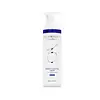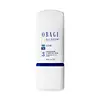What's inside
What's inside
 Key Ingredients
Key Ingredients

 Benefits
Benefits

 Concerns
Concerns

 Ingredients Side-by-side
Ingredients Side-by-side

Hydroquinone 4%
StabilisingWater
Skin ConditioningAscorbic Acid
AntioxidantAscorbyl Palmitate
AntioxidantBeta-Glucan
Skin ConditioningBrassica Oleracea Italica Extract
AstringentC10-16 Alcohols
EmollientCaprylyl Glycol
EmollientCetyl Alcohol
EmollientChlorphenesin
AntimicrobialDioscorea Villosa Root Extract
Skin ConditioningDisodium EDTA
Glycerin
HumectantGlycolic Acid
BufferingHelianthus Annuus Seed Oil
EmollientMaltodextrin
AbsorbentPhenoxyethanol
PreservativeQuillaja Saponaria Bark Extract
CleansingSmilax Aristolochiifolia Root Extract
Skin ConditioningSodium Lauryl Sulfate
CleansingSodium Metabisulfite
AntioxidantStachys Officinalis Flower/Leaf/Stem Extract
Skin ConditioningStearyl Alcohol
EmollientTocopherol
AntioxidantTocopheryl Acetate
AntioxidantYucca Schidigera Root Extract
Skin ConditioningHydroquinone 4%, Water, Ascorbic Acid, Ascorbyl Palmitate, Beta-Glucan, Brassica Oleracea Italica Extract, C10-16 Alcohols, Caprylyl Glycol, Cetyl Alcohol, Chlorphenesin, Dioscorea Villosa Root Extract, Disodium EDTA, Glycerin, Glycolic Acid, Helianthus Annuus Seed Oil, Maltodextrin, Phenoxyethanol, Quillaja Saponaria Bark Extract, Smilax Aristolochiifolia Root Extract, Sodium Lauryl Sulfate, Sodium Metabisulfite, Stachys Officinalis Flower/Leaf/Stem Extract, Stearyl Alcohol, Tocopherol, Tocopheryl Acetate, Yucca Schidigera Root Extract
Hydroquinone
StabilisingAscorbic Acid
AntioxidantBHT
AntioxidantButylparaben
MaskingCetyl Alcohol
EmollientDisodium EDTA
Glycerin
HumectantLactic Acid
BufferingMethylparaben
PreservativePhenyl Trimethicone
Skin ConditioningPPG-2 Myristyl Ether Propionate
EmollientPropylparaben
PreservativeSaponins
CleansingSodium Lauryl Sulfate
CleansingSodium Metabisulfite
AntioxidantStearyl Alcohol
EmollientTocopheryl Acetate
AntioxidantWater
Skin ConditioningAlternatives
Ingredients Explained
These ingredients are found in both products.
Ingredients higher up in an ingredient list are typically present in a larger amount.
Ascorbic Acid is is pure Vitamin C. This form makes up the largest amount of vitamin C found naturally in our skin.
Not only is vitamin C great for your overall health and immune system, it also has plenty of benefits on your skin.
Vitamin C is best used for brightening skin. It improves dark spots, acne scars, and hyperpigmentation. This is because it blocks the process of skin darkening when exposed to UV.
Remember: Vitamin C should not replace sunscreen!
Your skin uses vitamin C to build collagen. Collagen is one key component in having a strong skin barrier and plump skin. Vitamin C also plays a role in regulating collagen, thus making it effective in improving wrinkles and fine lines.
Ascorbic acid shows potent antioxidant activity. As an antioxidant, it helps fight free-radicals. Free-radicals are molecules that may damage your skin cells. These antioxidants also protect skin against UV damage.
The best formulations include Vitamin E and/or ferulic acid. These two ingredients help stabilize and provide a boost in the benefits of ascorbic acid. This is because ascorbic acid becomes unstable when exposed to UV and air. In fact, you can tell your ascorbic acid has oxidized when it turns an orange-yellow color.
Ascorbic acid is generally compatible with other ingredients. However, using ascorbic acid with other active ingredients might cause irritation. Two ingredients: copper ions and benzoyl peroxide, will inactivate ascorbic acid completely.
Read more about other types of Vitamin C:
Foods rich with vitamin C include oranges, strawberries, broccoli, bell peppers, and more. When consuming Vitamin C, your skin receives a portion of the nutrients.
Learn more about Ascorbic AcidCetyl Alcohol is a fatty alcohol. Fatty Alcohols are most often used as an emollient or to thicken a product.
Its main roles are:
Though it has "alcohol" in the name, it is not related to denatured alcohol or ethyl alcohol.
The FDA allows products labeled "alcohol-free" to have fatty alcohols.
Learn more about Cetyl AlcoholDisodium EDTA plays a role in making products more stable by aiding other preservatives.
It is a chelating agent, meaning it neutralizes metal ions that may be found in a product.
Disodium EDTA is a salt of edetic acid and is found to be safe in cosmetic ingredients.
Learn more about Disodium EDTAGlycerin is already naturally found in your skin. It helps moisturize and protect your skin.
A study from 2016 found glycerin to be more effective as a humectant than AHAs and hyaluronic acid.
As a humectant, it helps the skin stay hydrated by pulling moisture to your skin. The low molecular weight of glycerin allows it to pull moisture into the deeper layers of your skin.
Hydrated skin improves your skin barrier; Your skin barrier helps protect against irritants and bacteria.
Glycerin has also been found to have antimicrobial and antiviral properties. Due to these properties, glycerin is often used in wound and burn treatments.
In cosmetics, glycerin is usually derived from plants such as soybean or palm. However, it can also be sourced from animals, such as tallow or animal fat.
This ingredient is organic, colorless, odorless, and non-toxic.
Glycerin is the name for this ingredient in American English. British English uses Glycerol/Glycerine.
Learn more about GlycerinHydroquinone is used to treat hyperpigmentation, acne scars, and age spots.
It works by decreasing the melanocytes in your skin. Melanocytes are cells that create melanin (the color pigment in skin).
Be sure to use this ingredient as prescribed by your doctor. Wearing sunscreen is also a must (you should be wearing sunscreen anyway!).
Most hydroquinone prescriptions are not to be used for longer than 3 months. Long term usage can cause ochronosis, or a condition in which the skin darkens more than before.
This ingredient is banned in the EU for being skin sensitizer. In the US, this ingredient is not allowed for over-the-counter sale.
However, it is still possible to get hydroquinone in the EU, US, Canada, Australia, and Japan from a doctor's prescription.
There is no known research backing this ingredient to be carcinogenic in humans.
Check out the European alternative to hydroquinone here.
Gentle reminder that all skin tones are beautiful!
Learn more about HydroquinoneSodium Lauryl Sulfate (SLS) is a sulfate with surfactant properties.
The surfactant property make it a great foam creator and cleansing agent. Surfactants help bind ingredients that normally do not mix.
Some studies have shown skin irritation due to prolonged SLS use.
Sodium Laureth Sulfate (SLES) is a milder version of SLS.
Learn more about Sodium Lauryl SulfateSodium metabisulfite is also known as Sodium Pyrosulfite. It is a preservative, antioxidant, and disinfectant.
As a preservative, it helps stabilize cosmetic formulas without affecting their color or scent.
Stearyl Alcohol is a type of fatty alcohol from stearic acid. It is a white, waxy compound used to emulsify ingredients.
Fatty Alcohols are most often used as an emollient or to thicken a product. Emollients help soothe and hydrate the skin by trapping moisture.
They are usually derived from natural fats and oils and therefore do not have the same drying or irritating effect as solvent alcohols. FDA allows products labeled "alcohol-free" to have fatty alcohols.
Learn more about Stearyl AlcoholTocopheryl Acetate is AKA Vitamin E. It is an antioxidant and protects your skin from free radicals. Free radicals damage the skin by breaking down collagen.
One study found using Tocopheryl Acetate with Vitamin C decreased the number of sunburned cells.
Tocopheryl Acetate is commonly found in both skincare and dietary supplements.
Learn more about Tocopheryl AcetateWater. It's the most common cosmetic ingredient of all. You'll usually see it at the top of ingredient lists, meaning that it makes up the largest part of the product.
So why is it so popular? Water most often acts as a solvent - this means that it helps dissolve other ingredients into the formulation.
You'll also recognize water as that liquid we all need to stay alive. If you see this, drink a glass of water. Stay hydrated!
Learn more about Water